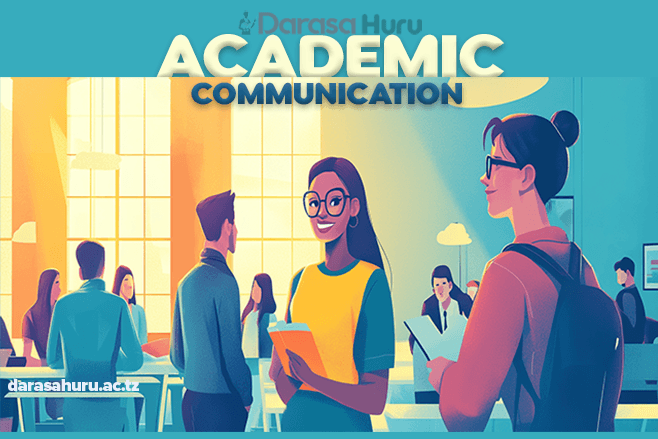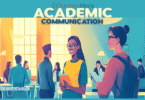Making Academic Presentations
The ability to present information confidently and convincingly in a classroom and beyond is a valuable skill for students. In this chapter, you will learn how to
prepare proposals and reports and how to deliver successful academic classroom presentations.
You will also learn how to prepare posters, banners and logos for academic purposes. The competence developed in this chapter will enable you to prepare convincing and captivating presentations and visual aids. It will also help you master the art of public speaking and enhance your academic performance and future career prospects.
Think
How confidence is key in communicating complex ideas with clarity and precision.
Reflect on both or one of these two occasions in your student life: attending an academic presentation or making an academic presentation. You can get into an academic
presentation and before you even know you quickly fall asleep, become bored, confused, or overwhelmed.
Furthermore, in an occasion where you are presenting an academic work, you are likely to face challenges such as how to keep your audience engaged and interested throughout the presentation. It is therefore important to note that making an academic presentation requires correct preparations and application of effective skills.
Preparations for presentation begin with having an academic document ready. Such document include essays or topic presentations, term papers research or project proposals, research papers, theses or dissertations, book reviews and lab reports.
Research proposals
A research proposal is a written document that describes the intended study project, including its aims, methods, and expected results. Usually, it is submitted to an academic institution like school to request approval or to a research organization or funding agency to request funding and approval for the suggested study. Writing a proposal, therefore means describing convincingly, the study you intend to embark on in order to secure approval and where need be funding.
This means that one must describe where the research will be conducted, who or what will the data source be, when the research will begin and end, how the data will be collected, who will collect the data, how the data will be analysed and the report be written, how much the research will cost, what ethical issues will be observed, and so on. A research proposal also elucidates the significance of carrying out the research.
However, the nature or goal of the research will determine the particular requirements of a proposal. A grant proposal, for instance, will have distinct specifications. It is necessary to refer to various sources to ascertain the requirements of a particular research proposal. Usually, a proposal is written and reviewed by experts and peers to determine the feasibility of the research.
Generally, all research proposals must be convincing, successful, and clear. A well-written proposal produces a quality report. As a student at one point in time you will be subjected to this academic process. You should, therefore have the knowledge of the strategies to ensure clarity, coherence, and persuasiveness of your proposal.
Strategies to consider when preparing a proposal
Understand the requirements. Before you embark on the drafting of your proposal, you should carefully read and understand the guidelines and requirements provided
by your teacher or school. Address all the specified components and follow any other given instruction.
Identify your interests. If the topic or theme for your project is not allocated to you by your teacher or institution, you should start by identifying topics or themes that resonate with your interest and passion.
Align with Curriculum. Conducting research in school is part of the learning process. Any learning activity has to align with curriculum or learning objectives so is the proposed study. This helps demonstrate the educational value of the project and its integration into your academic experience.
Express objectives. You should clearly express the objectives of the project you are proposing by specifying what you will learn and achieve through the project. These objectives should be specific, measurable, achievable, relevant, and time-bound (SMART).
Conduct a thorough literature review. Before you start writing you proposal you should familiarise yourself with existing information on your topic. You can do so by
conducting a comprehensive literature review whereby, existing gaps or unanswered questions will be identified and used to justify what your research will address.
Craft a compelling introduction. A proposal is supposed to convince the one you are seeking their approval or financial support from. A convincing proposal should clearly state the problem gap you aim to tackle, therefore, start with an engaging introduction that provides context for your research, explains its significance, and highlights the key research question(s) or hypothesis(es).
Develop a clear methodology. Any research undertaking has to be guided by research design, methods, and procedures. Explain in details why you have chosen a particular
approach and how it corresponds with your research objectives. You should describe how you will sample a portion of the population of interest in your study, data collection methods, and data analysis techniques you will use. also how you will sample your respondent sample for a research.
Consider feasibility. Any research undertaking is time, resources limited. Make sure your research plan fits within the time allocated and resources available. In other words, you need to be realistic about what you can accomplish and consider any potential challenges or limitations.
Address ethical considerations. If your study includes sensitive data, animals, or human subjects, explain how you will handle ethical issues and make sure that rules
and regulations are followed.
Seek feedback. After drafting your proposal, seek feedback from your teachers, fellow students or any other relevant person. They can offer valuable insights, identify areas for improvement, and help you strengthen your argument.
Revise and polish. You should revise and polish your proposal after you have received comments from others and after you have had time to go through it and identify any issues. At this point your focus should be on clarity, coherence, and grammar so that the writing becomes succinct, well-organized, and free of errors.
Exercise 5.1
1. Reflect on any of the proposal or report you have ever written and explain how convincing and captivating it was.
2. Describe the following aspects involved in developing research methodology: research design, population, sampling and sampling methods.
Activity 5.1
Conduct a comprehensive literature review on a topic or theme that interests you.
Main components of a research proposal
Your project proposal has to be broken down into the following sections:
Title page
The title page of your proposal gives the first impression to a potential reader or funder. It should contain the essential components that highlight your project and your qualifications and it should be clear, brief and attractive.
Title pages slightly vary depending on the type of research, institution or field of specialisation but all must include proposal/research title, author, date, author affiliation. School proposals add the course, instructor, due date, etc.
Introduction
This section provides background information on the project topic. It also highlights the importance and relevance of the study, and states the research problem or question.
Literature review
When you conduct a literature review, you analyse a particular subject area to find key research inquiries. To complete a literature review, you need to read various sources, such as academic papers and books, both electronic and physical. When writing the literature review, you can start by providing the general overview of the sources you have gathered.
However, it is important to organise this information in a structured manner, typically including both summaries and synthesis. Summaries condense the most important details from each source, while synthesis involves rearranging or reorganising these details to present a cohesive argument or narrative.
Significance of research
This is the reason behind carrying out the research. This section elucidates the relevance of your research to the field of specialisation. For instance, the accomplishment of the research might highlight or close a gap in the body of knowledge. The success of the research could contribute fresh, novel insights to the current literature of the topic. See the following example of the significance of research.
Methodology
The methodology section describes the areas and actions that will be taken to conduct the research. This information can be used by reviewers and readers to confirm that
your approach is accurate and will yield the desired results. A strong methodology will help the researcher conduct the study more successfully and will give readers more faith that the study can yield reliable results. The simple future tense is used in writing the methodology section of a research proposal.
Timeline and Budget
This section is crucial as it outlines the constraints of time and resources. You ought to express the expected timeline for the research project and the estimated budget required to conduct the study. There is also a section on expected outcomes and significance where you are expected to highlight the expected outcomes of the research and the potential contributions it could make.
References
The author must select relevant sources to support claims or provide evidence of important statements in the proposal. The proposal should then include a list of references used.
Activity 5.2
Use library or online sources to prepare a proposal for a topic or theme you conducted literature review about in Activity 5.1.
Exercise 5.2
1. How helpful was literature review in justifying your proposed study?
2. How did you collaborate with your peers and how helpful was the collaboration?
Research report
Research report is one of the academic documents you may at one point in time be required to prepare and present. It can be said to be a document that communicates research findings. It is normally prepared by a researcher or someone involved in a research activity involving relevant information on the research work carried out. The relevant information includes but not limited to research findings and actionable recommendations.
Preparation of research report is not an easy task. It is an art that requires a good deal of knowledge, imagination, experience, and expertise. It also demands a considerable time and money.
A report is organised in sections and has to follow a particular format. Your school, teacher or project manager can come up with their own format, depending on their unique needs. In general, though, the format of report has to have title page, table of contents, page numbering, headings and subheadings, citations and works cited page.
Basic guidelines for writing a report
Writing research or project report can be done at the ease of a a researcher if the following guidelines are followed:
1. Revise your objectives and expectations: Before you start writing your report, you should revisit the purpose and expectations of the research or project. You have
to answer some crucial questions, such as; What was the objective of research or project? Is there a required standard of report? Who will read the report? What is the report for? Answers of such questions are likely to help you make a good report.
2. Prepare an outline: It is the planning phase for the content or the report. On the basis of nature of data, purpose and objective of research, and requirements of the one getting the report, you will have to prepare report outline to help you to decide on things like how to arrange your ideas before you starting writing, time frame for
accomplishing the writing etc.
3. Start writing: When you are set and ready to start, get the ball rolling. Follow the outline or roadmap you have created and work on one section of a report at a time.
4. Prepare first draft: Getting final draft of a report with a single effort may not be an excellent idea. You have to start with first draft. That draft is your attempt to
synthesise the ideas you developed through the steps of reading, data collection, analysis and presentation. These ideas will be further refined and organized through a series of revisions.
5. Review and rewrite: Review the first draft of your report for improvement. Reviewing entails checking if findings align with research or project objectives, purpose and expectations, if the methodology proposed has been used to inform the research or project topic and if findings reported meet the purpose and objectives of the study.
6. Proofread and check for mistakes: It is crucial to get over your report one final time, optimizing your wording and checking for any grammatical or spelling mistakes. While reviewing and rewriting you were checking for “big picture” mistakes but when proofreading you are looking for specific problems that might have gone unnoticed before.
Characteristics of a good research report
A good research report is characterised by the following:
Simplicity: The language of the report should be as simple as possible so that a report is easily understandable. Avoid using jargon and technical words. Even when it is a
technical the report, find a way of explaining the technical terms in an event where you are presenting to laymen.
Clarity: make sure the language is clear and straight in expressing what is intended to be expressed. Clarity is mainly created by proper writing and organisation of content.
Brevity: Unless it is necessary, do not entertain long reports. Unnecessary long report is likely to make readers or listeners lose patience or get confused. However, note that a report is not an essay, thus, it must contain enough detail to covey meaning.
Accuracy: your report as to be accurate. Accuracy of facts reported but also free from personal bias.
Logical Sequence: a good report has to be arranged logically. Observe all the sections of a report.
Attractive: A good report must be attractive in all aspects. For example, if you are reading it from a paper or handing in a written version, it should be attractive in size, colour, illustrations and paper quality. If you are presenting it in slides format, slides should be well prepared i.e., with attractive colour scheme, font style, and layout.
Activity 5.3
Write a report of the findings of the project whose proposal you prepared in Activity 5.2 and practice for presentation. Enhance that report with charts, videos, or cartoons.
Preparing and making academic presentations
Academic classroom presentations by students may include speeches, performances, exhibits and other academic or artistic expression forms. They crucially help students
enhance their written and verbal communication skills, enabling them to convey complex concepts to their peer students effectively. Presentations are highly valuable for students in the educational setting.
Steps in preparing an academic presentation
The following are the steps to be followed in preparing academic presentations:
(a) Developing familiarity with the purpose and audience
Explain the purpose of your presentation, whether it is about research findings, a field trip report, or a report for an assignment given by your teacher. Then, learn
about whom the presentation will be made.
(b) Enhancing understanding of the main ideas of the presentation
The main ideas should be briefly presented to attract the audience.
(c) Organising the presentation
Put the presentation sequentially, allowing you to present it smoothly and logically.
For example, you should start presenting from the introduction to the conclusion of your work.
(d) Creating illustrations and slides
Create slide notes with illustrations such as graphs, charts, images, or diagrams to complement the presentation.
(e) Making the introductory part strong
Introduce the presentation by explaining the purpose of your presentation while providing what you expect to cover. Mention the statistical data and ask the audience
questions to attract their attention.
(f) Presenting your main ideas or points
When you present your work, go directly to the main message and support them by providing examples from authentic sources.
(g) Practising before presentation
Practise the presentation by doing a peer presentation from the introduction to the conclusion for feedback. This will help you to familiarise yourself with the content
and refine your delivery. Practise how to observe the time allocated for presentation and your body language, too. Rehearsing will help you avoid rushing or going above
time and reduce errors during the presentation.
(h) Focusing on the expected questions
It would help if you considered the questions the audience would ask during the presentation. This would help you to show your expertise and confidence in responding
to the questions from the audience.
Considering technical issues
Be aware of the venue and technical support, including troubleshooting network problems, configuring computer systems and testing new technology to ensure the usefulness of the technical materials.
Exercise 5.3
How easy or uneasy are you every time you make oral presentations to the class?
Activity 5.4
Create slide notes for presenting the report you have prepared in Activity 5.3. You may also use illustrations such as graphs, charts, images, or diagrams to complement
the presentation.
Classroom presentations
Effective preparation is crucial to bringing a successful academic classroom presentation.
It allows you to communicate your ideas confidently. Examples of academic presentations are classroom presentations and research proposal or research report presentation.
Classroom presentation is a method of delivering the content to students within an educational setting. A teacher or student can do it. Classroom presentation aims to share knowledge, foster understanding and facilitate learning about a topic.
Forms of classroom presentations
Classroom presentations by students include presentations, demonstrations and group discussions. They may use various illustrations such as slides, charts, videos, or cartoons to enhance information transfer and audience engagement.
Aims of classroom Presentation
(a) Sharing research or projects
Students may give presentations to share their research and project proposals and findings or creative work within the class. This allows them to develop communication
skills and showcase their learning achievements.
b) Promote and support students’ engagement in learning
Interactive elements within presentations, such as discussions or question-and-answer sessions, encourage students’ active participation in the learning. Presentations can
reinforce students’ understanding of the covered materials, and they can serve the materials to revise important theories.
(c) Developing communication skills
When sharing research and project findings, students get an opportunity to develop the skills for communicating openly. They learn to give out their ideas, structure information, and deliver the message effectively to the audience.
(d) Clarifying complex ideas
Presentations done by students may also clarify any complex idea into understandable components. Students may be assigned to present and clarify something they previously presented. Clarification can be achieved through visual aids, examples and other illustrations.
Things to consider when conducting classroom presentations
Effective classroom presentations are about delivering information, promoting meaningful learning, and understanding it among students through collaboration and facilitation from teachers. The following areas are to be considered for effective classroom presentation:
(a) Understand the learning objectives
Familiarise yourself with the learning objectives, topic or competence in hand of the presentation. Ensure you have a comprehensive knowledge of the facts, theories
and examples of the subject matter. Make the theory and objective comply with the content for effective learning outcomes.
(b) Use different methods
Using various methods during presentations enables you to cater for the needs of your audience in particular peers with different learning abilities. For example, you can use visual aids and verbal explanations. Moreover, applying various methods can assist you in accommodating all the peers regardless of their number in the classroom.
This can be practised through group discussions, small activities, case studies, or demonstrations. Different methods can lead to active engagement and collaboration amongst peers.
(c) Manage your time
Obserye time allocated for your session and make sure you manage it accordingly. This will indicate respect to the audience and maintain their attention to your presentation.
(d) Ask your audience for reflection and feedback
Encourage peer students to provide feedback on your presentation. Ask for their opinions on whether the content is clear, what the presentation style is and what their involvement is. You may also take time to reflect on your presentation. Identify areas of strengths and weaknesses for improvement in future presentations.
Activity 5.5
Present the report of your project that you prepared in Activity 5.3 and 5.4. Use PowerPoint or slides posting mode.
Exercise 5.4
1. Explain the different methods of presentation you employed in your presentation.
2. What challenges did you face and how did you address them during the preparation and presentation?
3. Exemplify how creativity, critical thinking and collaboration helped you in preparing and presenting your report.
Using posters, banners and logos for academic purposes
Posters
Posters are visual display materials that provide precise and visual information. They are frequently used as visual aids to clearly and concisely communicate complex information through key points, pictures, charts, graphs and research findings. Information in posters is fostered through the enlargement of contents to effectively communicate information and interact with the audience in conferences. exhibitions, symposiums, or academic gatherings. The primary function of a poster presentation is to attract the viewer’s attention and facilitate discussions about the work being presented.
With well-prepared posters, public presenters and in our context students can connect with others interested in the same topic, participate in meaningful conversations and get real-time feedback. In academic setting these are used to present academic projects, conference presentations, and research findings. They contain sections like abstract, introduction, methods, results, discussion, and conclusions are often included in these posters.
They are frequently put on display to visually convey research findings to a large audience at conferences, symposiums, and academic events. The components of an academic poster will change based on the kind of message the poster is meant to convey. You might be expected to create posters for research presentations, campaigns, education, advertising, seminars and more.
For instance, a research presentation poster must include the title of the study, the author and affiliation, the methods employed, the primary findings, the conclusions, and recommendations in brief. An educational poster needs to convey a message that is concise, understandable, and simple to recall. There is no one format for creating posters. However, they all need to have certain essential components to be visually appealing, readable, informative and easy to remember the message.
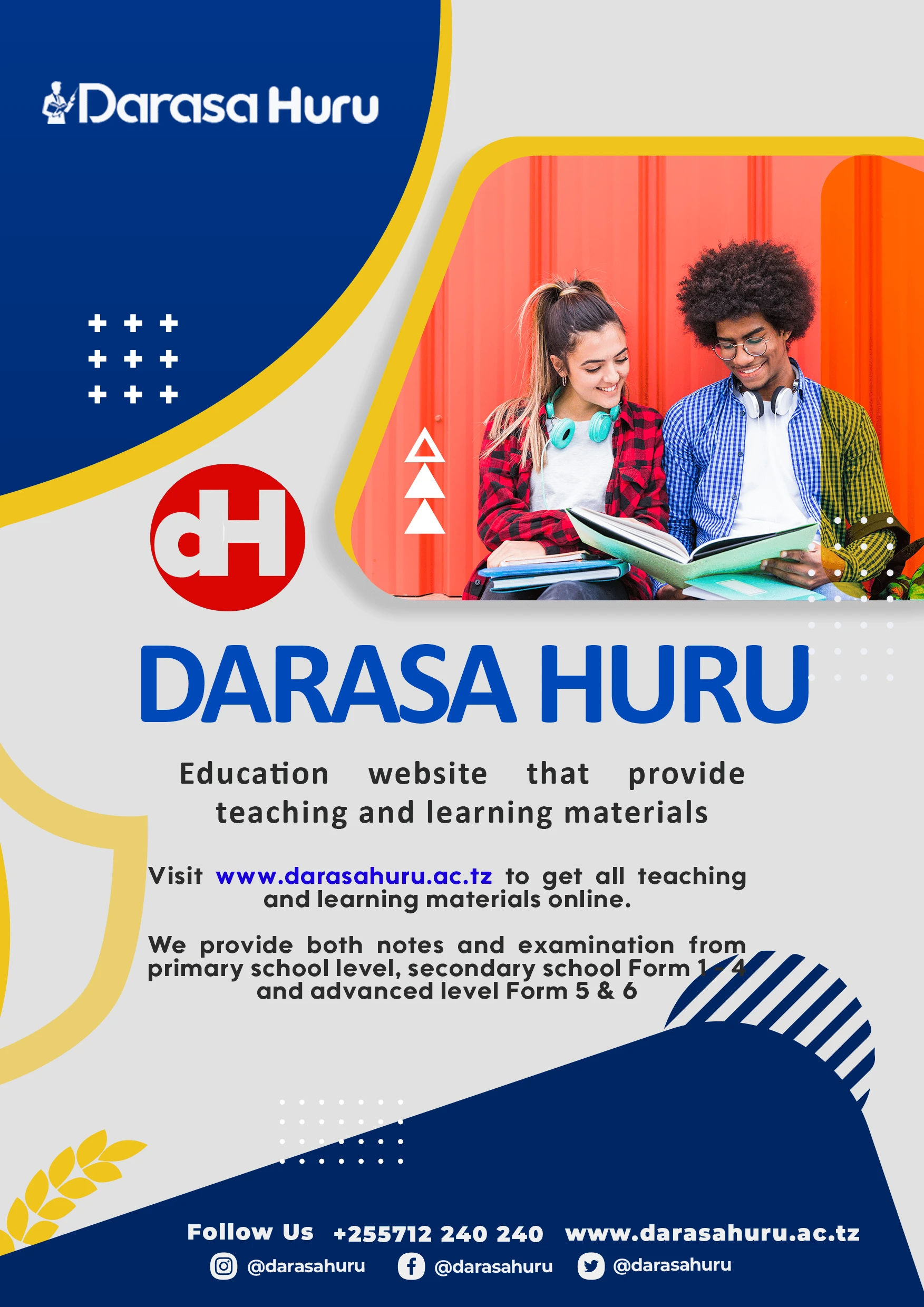
Banners
The term ‘banners’ can have multiple meanings depending on the context. In marketing and advertising, banners typically refer to large graphic displays used for promotional purposes. They can be used in various outdoor settings, including retail stores, trade exhibitions, conferences on buildings, roadsides, or trade shows to attract customers and raise brand awareness.
In academic setting, banners are used for almost a similar purpose, promotion or branding. For example, they can display school’s or any other academic institution’s name and logo during ceremonies, events. In a school context, they can also be used to advertise important announcements, special events, and academic programs to the school community.
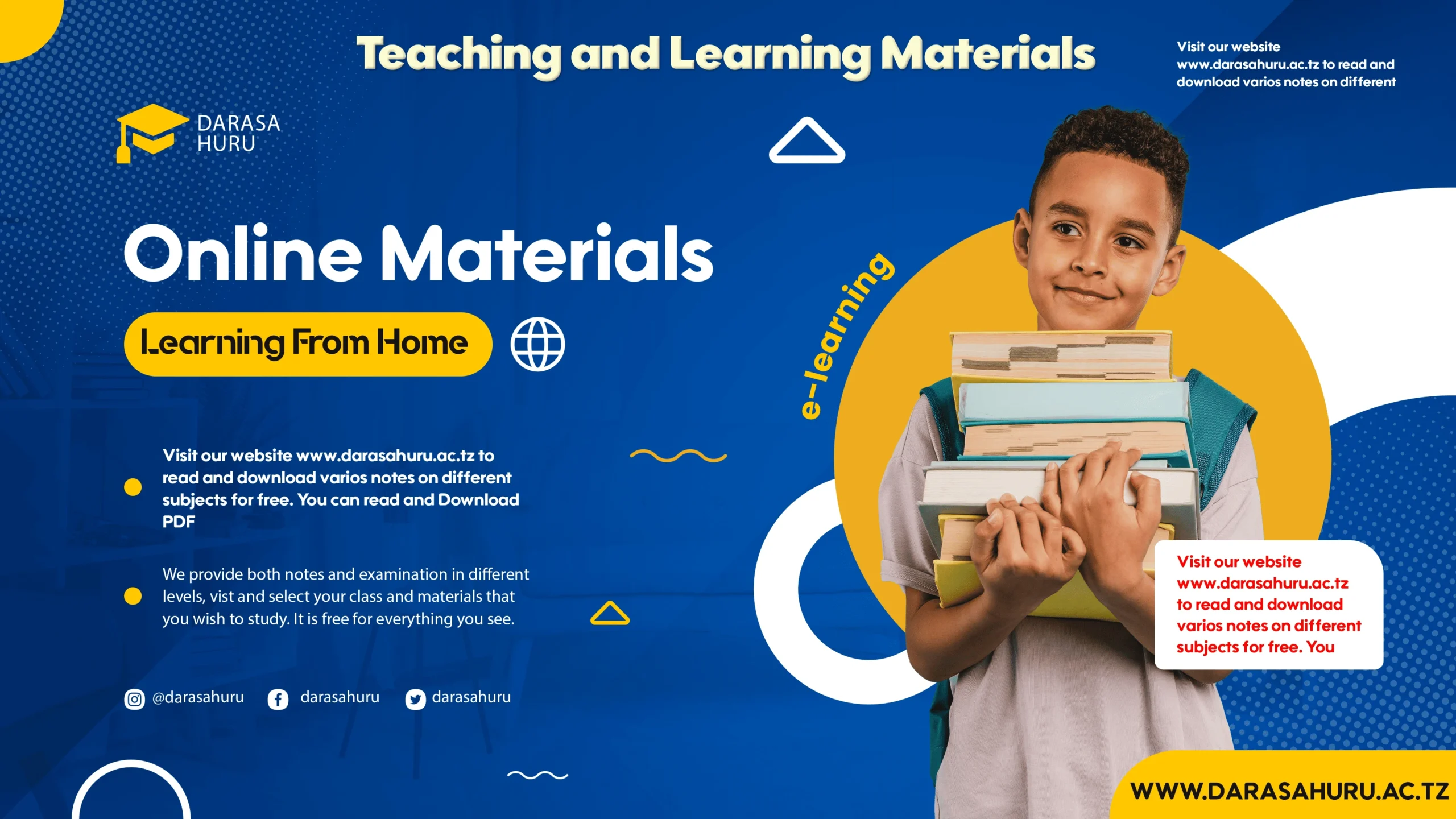
Logos
A logo in an academic setting is a visual depiction of school, college or university. A logo gives academic institutions a visual identity that contributes to their credibility and recognition. Academic logos are frequently used in publications, websites, promotional materials, and official documents related to the school or any other academic institute. A logo is often designed to be easily recognisable and memorable.
A key element of a logo for an institution can vary depending on the specific goals, values and nature of the institution. However, some common elements are often considered essential in creating a meaningful and effective institutional logo. Even with that, a symbol or icon representing the institution’s identity or core values is the main element of a logo. It could be a unique shape, an abstract design, or a stylized representation of an object relevant to the institution.
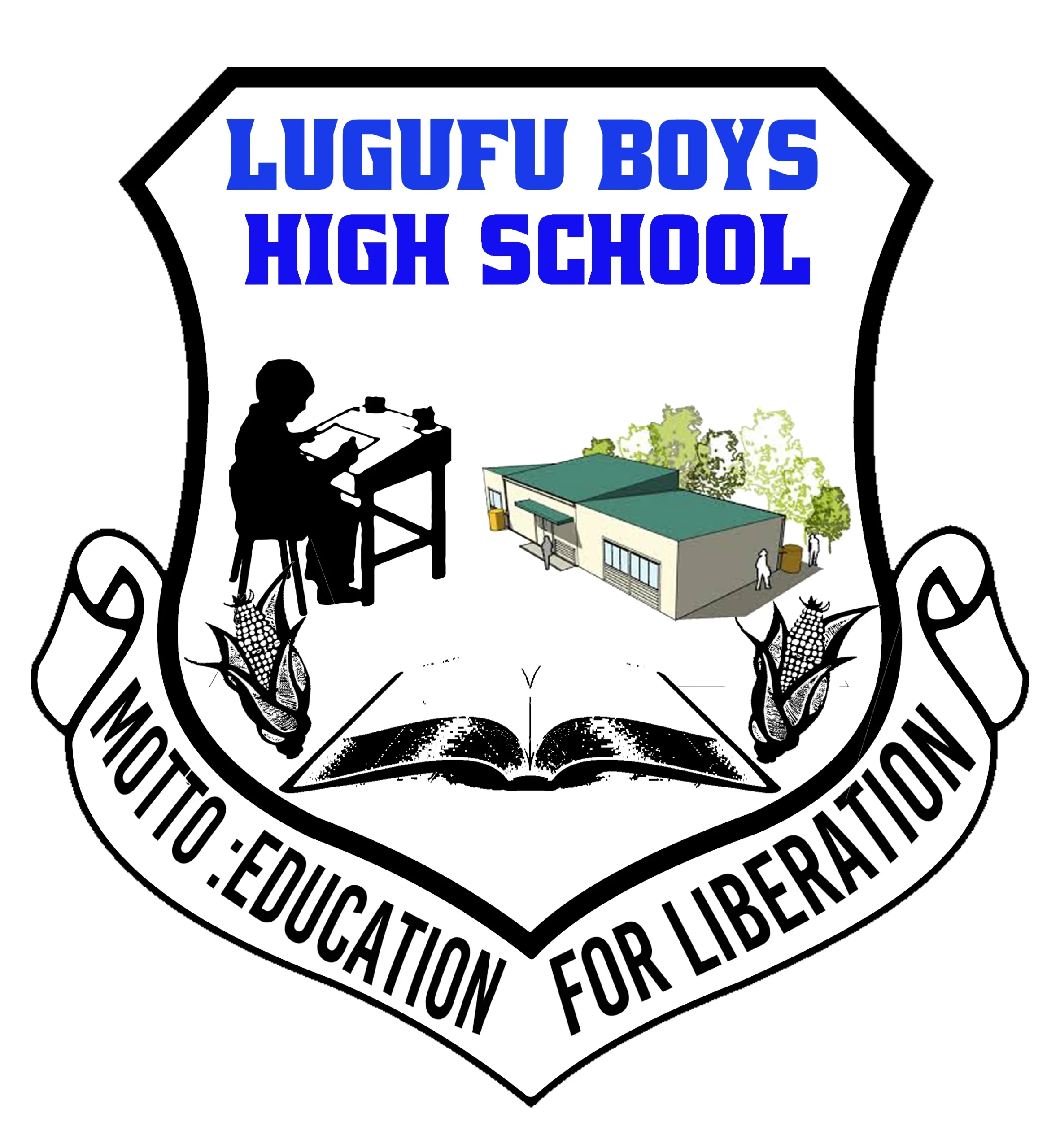
What to consider in creating posters, banners and logos for academic purposes
You have to take into consideration a number of things when planning to create a poster or banner for academic purposes. Think of a situation where you are tasked by your school to prepare a poster for a particular school or subject club event or project, a banner for advertising an upcoming inter-class or inter-school academic competition or a new logo for your school. The following are among what you should consider:
(a) Defining the purpose
Establish the goal for the poster or banner to ensure your target audience understands the message you want to disseminate. For example, ask yourself if the goal is to spread knowledge, create awareness, or endorse an event.
(b) Identifying the target audience
Recognise the preferences, interests and demographics of the target audience. Your audience could be your peer students, teachers, parents, students from another schools
or just the general public. Using this knowledge, you can effectively tailor your design and message to resonate with them.
(c) Collecting information
Gather all the data and materials you are supposed to use on the poster, logo or banner. These data and materials could contain information about the event, essential
messages, pictures, logos and contact details. Make sure the information is precise and concise.
(d) Layout planning
Sketch a rough layout of your poster, banner or logo. Consider the placement of images, text, and other elements. Plan for an eye-catching focal point and a clear visual hierarchy that guides the viewer’s attention.
(e) Digital drafting
Once you have a selection of promising hand-drawn sketches, transfer them to digital software. Refine and develop the most promising ideas digitally, experimenting with colours, shapes and typography. This stage helps to create a more polished and professional representation of the concepts.
(f) Review and feedback
Share the initial concepts of a banner, poster or logo with your teachers, peers or other relevant people for feedback. Consider their input and suggestions for improvement. Iteration and refinement are essential at this stage to ensure the final creation captures the envisaged product.
(g) Refinement and iteration
Based on the feedback received, refine the chosen concept further. Experiment with different variations, colour palettes and typography options. Consider how the poster, banner or logo will appear in different sizes and formats.
(h) Finalisation
Once the design has been refined and approved, finalise the poster, banner or logo by creating different file formats (e.g., vector, PNG, JPEG) and variations (e.g., full-colour, black and white, horizontal, vertical).
Activity 5.6
Design the following items for use in academic communication:
1. A research presentation poster for your group.
2. A banner promoting an inter-class academic competition in your school.
3. Your school new logo.
Revision Questions
1. What are the key elements of a proposal and a report and how do they differ in terms of structure and content?
2. Explain the importance of citing sources and providing evidence in academic reports.
3. Discuss the importance of practising your presentation before the actual presentation.
4. Explain any engaging techniques one can apply during presentation.
5. How can a student benefit from the use of posters and banners in academic settings?
6. Discuss the best practices for integrating visual aids into a presentation.
7. Discuss different strategies one can use to tailor their presentation to different audiences, such as peers, teachers, or community members.
8. Reflect on your experience in preparing a proposal and report and presenting to the class. What challenges did you face, lessons did you learn, strategies did you use and how good or bad did you perform? How helpful has this chapter be in boosting your confidence and sharpening your presentation skills?
10. Explain how this chapter impacts your future career prospects.

